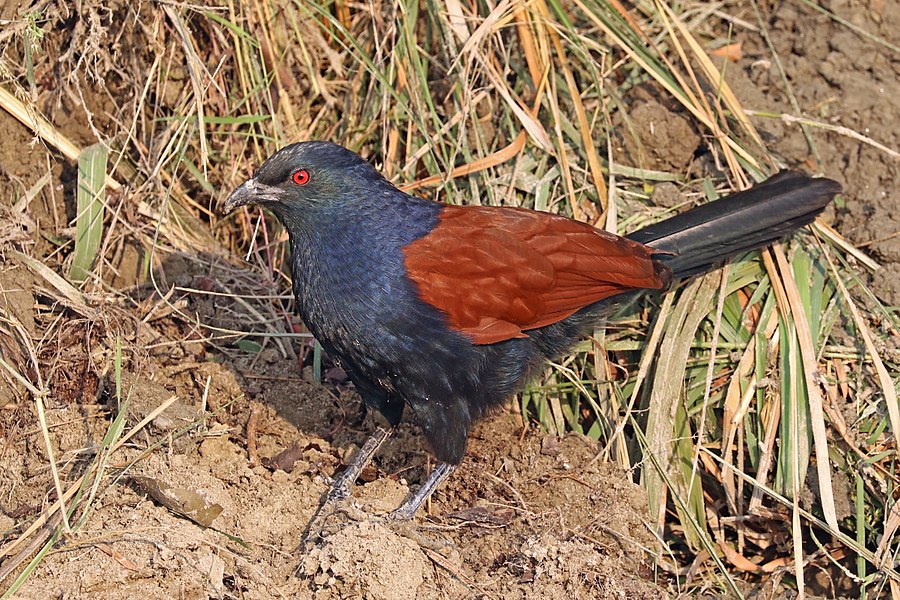Facts About Greater coucal
The greater coucal, often known as the crow pheasant, is a striking bird belonging to the cuckoo family, Cuculiformes. These large birds can be observed across the Indian Subcontinent and Southeast Asia. They have several subspecies, with some even considered distinct species. With long tails, coppery brown wings, and a crow-like appearance, greater coucals are a familiar sight in various environments, from dense jungles to urban gardens. While they aren't adept fliers, they're often found on the ground or in vegetation, hunting for insects, eggs, and nestlings. Their deep, resonant call holds cultural significance in many regions.
In terms of appearance, the greater coucal is unmistakable. It features a black head, a purple-glossed black underside, and chestnut brown back and wings. Depending on the subspecies, there can be slight variations in size and plumage. These birds are distributed from the Indus Valley to southern China and Southeast Asia.
Regarding their diet, greater coucals are not picky eaters. They consume insects, small vertebrates, fruits, and seeds. Interestingly, they've been observed eating toxic fruits and can sometimes be pests in oil palm plantations. In the mornings, you might spot them sunbathing with their wings spread wide. They're most active during the warmer parts of the day. Their vocal repertoire includes booming calls, rattling sounds, scolding noises, and even hissing threats.
Breeding season for greater coucals typically begins after the monsoon. These birds are monogamous, and their courtship rituals involve males presenting food to females. Nest-building is usually the responsibility of the male, who constructs a deep cup-shaped nest in dense vegetation. A typical clutch contains 3 to 5 eggs, with an incubation period of about 15-16 days. The chicks fledge after 18-22 days.
Research indicates that greater coucals can be hosts to haemosporidian parasites and ticks. Despite these challenges, they play a crucial ecological role in their habitats and exhibit fascinating behaviors related to feeding, breeding, and communication.

 Laos
Laos